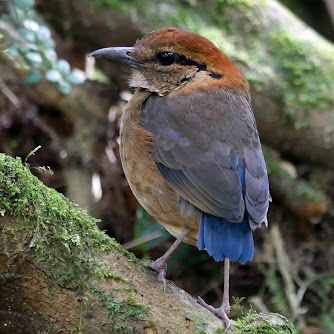Tabin Wildlife Reserve, located in Sabah, Malaysia, is a premier destination for bird and wildlife photography enthusiasts. Covering an area of approximately 300,000 acres, this reserve is home to a diverse range of flora and fauna, making it an ideal location for capturing stunning images of the natural world. A wildlife photography trip to Tabin Wildlife Reserve offers a unique opportunity to witness and photograph some of Borneo's most iconic wildlife species in their natural habitat.
One of the main highlights of a wildlife photography trip to Tabin Wildlife Reserve is the chance to photograph the elusive Bornean pygmy elephant. These gentle giants are the smallest species of elephant in the world and are a sight to behold in the lush forests of Tabin. With a keen eye and a bit of patience, photographers can capture stunning images of these majestic creatures as they roam freely in the reserve. In addition to the Bornean Pygmy Elephant, Tabin Wildlife Reserve is also home to a wide variety of other wildlife species, including Orangutan, Clouded Leopard, Tembadau, Island Palm Civet (formerly known as Common Palm Civet) and Northern Grey Gibbon. With its diverse range of habitats, from dense rainforests to expansive mangrove swamps, the reserve offers photographers the opportunity to capture a wide array of unique and captivating images.
Overall, a wildlife photography trip to Tabin Wildlife Reserve is a truly unforgettable experience for any nature enthusiast. With its diverse range of wildlife species, breathtaking landscapes, and rich biodiversity, the reserve offers photographers the opportunity to capture some of the most mesmerizing scenes of the natural world.
Our targets are mainly birds and personally, I would say the highlights for this trip are the frequent sightings of hornbills (Rhinoceros, Oriental Pied, Black, White-crowned, and Wrinkled), Striped Wren-babbler, Blue-headed Pitta, Black-crowned Pitta, Malaysian Blue Flycatcher, White-crowned Shama, Crested Serpent Eagle (Spilornis cheela pallidus) a subspecies to northern Borneo, Storm's Stork, Bornean Crested Fireback and Great Argus. I missed the latter species, though.
This trip was a pre-arranged trip to focus on a few specific birds of Tabin Wildlife Reserve. I had to missed the first 2 days of the trip due to family matters. This is my 1st trip to Sabah for year 2024 and my 2nd visit to Tabin after almost 14 years.
Nonetheless, it was a good trip for myself because I get to spend some time with the newly acquired Sony A6700 and the 200-600mm lens. The lens is surely heavy and not suitable for me to hand hold it for long period of time.
Blyth's Frogmouth (Blyth's) Batrachostomus affinis affinis
Distribution covers Southeast peninsular Thailand south to Sumatra and the Riau Archipelago, and virtually throughout Borneo (including Banggi Island). The vernacular name is in honor of Edward Blyth (1810–1873), an English zoologist who served as the curator of the Museum of the Asiatic Society of Bengal in Calcutta from 1841 to 1862. Blyth was also a renowned collector.
Malaysian Blue Flycatcher Cyornis turcosus
Distribution covers Malay Peninsula, Sumatra and Borneo. The small flycatcher is not globally threatened, but is currently classified as Near Threatened. The species can be found in Taman Negara National Park and other localized habitat in Peninsular Malaysia, where it is considered uncommon. However, the species is common and widely distributed in Borneo.
Olive-backed Woodpecker Gecinulus rafflesii dulitensis
There are 2 subspecies for Olive-backed Woodpecker and the dulitensis subspecies is smaller than the rafflesii. This subspecies is only found in Borneo.
Ruby-cheeked Sunbird Chalcoparia singalensis borneana
There are 11 subspecies and borneana subspecies is only found in Borneo and Banggi Island (the largest island in Malaysia, located north of Sabah). The diet of the insect-eating bird includes caterpillars, spiders (Araneae), fruit, pollen, and nectar. It forages primarily in the upper storey but can also be found in the lower levels. The bird is known to feed on spider webs and probes flowers for nectar. Additionally, it gleans insects from leaves.
Striped Wren-Babbler Kenopia striata
This species is generally uncommon, occurring at fairly low density. Sightings has been reported in Taman Negara National Park and some other forests in Peninsular Malaysia. It is also frequent in Borneo, although reportedly uncommon in Sabah. I heard this twice and saw once throughout the duration of our stay in Tabin.
White-crowned Shama Copsychus stricklandii
This species is sedentary and typically found in lowland or lower montane forests, frequently near streams. They can also be found in primary and secondary heath forests up to 1,200 meters in northern Borneo, freshwater swamps, scrub areas near mangroves, tall closed island forests, logged forests, and other disturbed habitats. The diet of this species consists primarily of insects such as ants, worms, spiders, and centipedes, as well as berries.
Black-crowned Pitta Erythropitta ussheri
Endemic to Borneo.
Black-throated Wren-babbler Turdinus atrigularis
Endemic to Borneo.
Buffy Fish-Owl Ketupa ketupu ketupu
Crested Serpent Eagle Spilornis cheela pallidus
This subspecies is found in the lowland of North Borneo.
Red-legged Crake Rallina fasciata
Found this individual resting while we were on the way back to the resort at night.
Red Giant Flying Squirrel Petaurista petaurista
----------------------------------------------------------------------------------------------------------------
Contact me to make a reservation for a private birding tour with an experienced and licensed tourist guide specialize in birdwatching and photography tours. I have been guiding professionally since 2007 with birders coming from United States, Canada, UK, Finland, Sweden, France, Germany, Denmark, Netherlands, Portugal, Spain, Brazil, Ecuador, Greece, South Africa, Australia, India, Sri Lanka, Singapore, Hong Kong, Taiwan, Japan, South Korea, Philippines, Brunei and others.
Follow my year 2024 sightings with photographs from camera and mobile phone:
Bird of Year 2024
----------------------------------------------------------------------------------------------------------------
Check out the following bird families:























